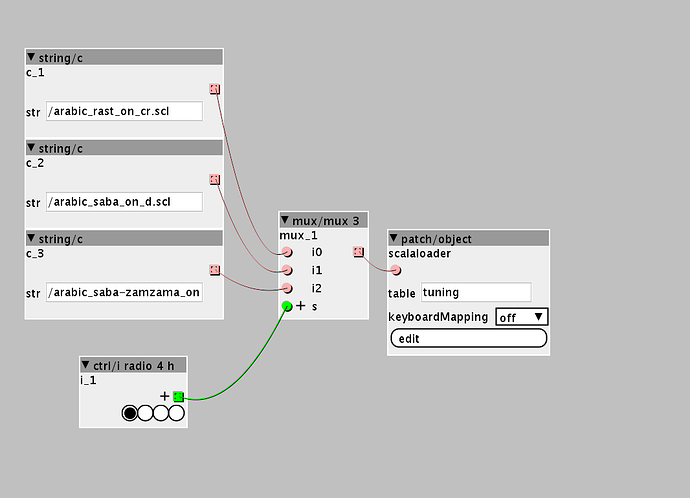@lokki I’m using conversion from frequency to midi -64 to 64 and converting to 32uint outside of the axoloti but following the research I’ve been doing thanks to the thetechnobear’s advice you really need to be doing any conversions on the axo or another device that supports fixed point math and the Q number systems used on the axo.
Having said that the best way forward seems to be to follow johannes and the others model and use functional tuning on the axo itself. This could mean an init routine that sets up a array maybe even multi dimensional i.e. with an offset indexing scheme like thetechnobear hinted at. Try thinking about the intervals as functions. 2/1, 7/4 etc or algorithmic forms rather than floats then your using the number system on the architecture itself. Much much simpler.
I’m still working on it...I’m attempting to write a parser for files on the SD.
The axo is by all means a highly flexible system to use and should reduce the kinds of rounding errors and problems with overflow ( especially in the smaller Edo’s ) you’ll get trying to do things elsewhere and bringing them in from outside.
I forget where I saw it on here but I think it was lokki’s Remapper? that could also be pressed into service for keymappings too..
By the way Op de Couls Scala is a beast.




 But I don't find it right now.
But I don't find it right now.